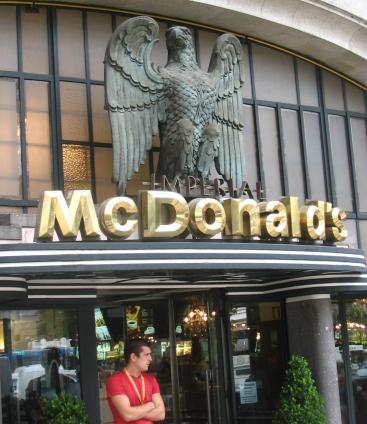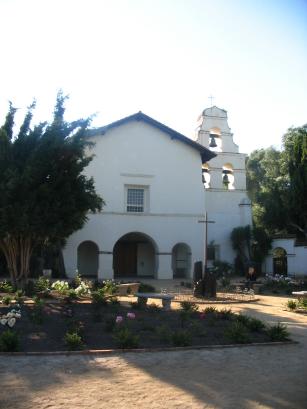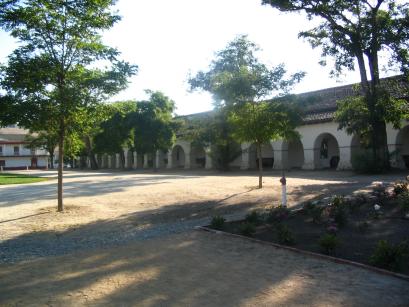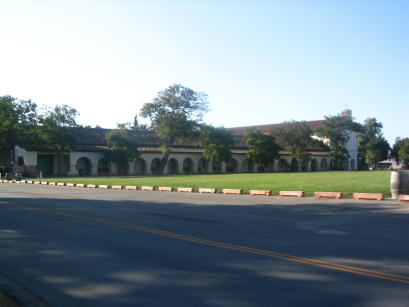We are developing the social individualist meta-context for the future. From the very serious to the extremely frivolous... lets see what is on the mind of the Samizdata people.
Samizdata, derived from Samizdat /n. - a system of clandestine publication of banned literature in the USSR [Russ.,= self-publishing house]
|


From a literal reading of this, one would think that the Citibank 24 hour banking centre is only open for six hours a day. However, I suppose the distinction between am and pm is subtle for people who are not used to the English language. In truth the Citibank 24 hour banking centre is open for a full 18 hours a day, which makes perfect sense.
(These photographs are of the Citibank branch just across the square from Brussels Central railway station in Belgium. They have read exactly this way for years, as I first discovered when trying to withdraw money at 1am in 2002).
Take my love, take my land, take me where I cannot stand.
I don’t care, I’m still free. You can’t take the sky from me.
Take me out to the black. Tell ’em I ain’t comin’ back.
Burn the land and boil the sea. You can’t take the sky from me.
Have no place I can be since I found Serenity
But you can’t take the sky from me.
– Joss Whedon
I have long defended an American corporation, much hated by anti-globalisation types, greens, leftists, even many conservatives. While many seem to think that the mission of said corporation is to destroy all that is good in the world and to act as a back door through which America can destroy local colour and local traditions, I have found it hard to fault a company that sells hamburgers to people who voluntarily choose to consume them, that has introduced the concept of the public toilet to many parts of the world where the idea was lacking, and generally provides excellent customer service to go with its slightly questionable food. I have found it hard to see anything sinister in that.
But alas, in the Praça da Liberdade in Porto on Saturday, I discovered that those brave battlers against corporate domination of the world were right. For the era of concealment is over. McDonald’s restaurants are now established in most of the world, and they can finally allow their true ambitions and the true scope of their mission to become clear. The time for hiding is now, clearly, over.

I will confess that despite their obvious sinister ambitions, I quite like the new logo.
I have just moved into a new flat. As I am now living alone, and in my last arrangement I was not, I find that there are a lot of basic odds and ends that I need but which I don’t have already. I particularly need items for the kitchen.
One thing I needed was a microwave oven. While I did technically own a microwave oven already, that one is in Australia. So I went my local large Asda store, and looked for microwaves. They had a good, basic model of microwave oven on sale for £24.41. That is right, £24.41. (Excluding the VAT tax imposed by the British government, the price is even less – £20.77. That is well under 40 dollars). The prices of a great many electrical and electronic goods have collapsed over the last four or five years, but I still find it amazing. I can only have a modest meal in a London restaurant for that price, but somehow it is possible to make a microwave oven in China, ship it halfway round the world, bring it into a large London store, and sell it to me, while still making a profit, for such a miniscule price. The microwave oven I own that is still in Australia and that I bought in 1999 cost me more than three times as much. And through lower prices I am therefore more than $100 better off than I was in 1999, just through that one purchase.
There is not much to be said, other than:
Three cheers for free trade.
Three cheers for globalization.
Three cheers for the internet and other international communications networks, and the global supply chains and massive economies of scale that they bring.
Three cheers for container shipping, and the amazing logistical work that goes with it.
Three cheers for the industrialization of large swathes of Asia.
And, finally
Three cheers for Wal-Mart.
Brian recently wrote a piece about the importance and usefulness of mobile phones in poor countries, particularly in Africa. I couldn’t agree with him more, but there is another interesting story in just where the expertise and money to build these African networks are coming on, and it is an oddly positive story.
But first, a seeming digression. When mobile phones came along in the early to mid 1980s, there were generally two patterns of licensing. Firstly, there were countries (eg Australia) where the incumbent telephone monopoly was given a monopoly on the new technology. Secondly, there were countries (eg Britain) where two mobile companies were licensed. One of these was usually the incumbent telephone monopoly, and the second was usually a new company that was brought into being to provide the new service. It is worth remembering that few people at this point expected that there would be a large market for mobile phones, so often these second players were small start up companies that paid very little for the licences. (The US issued no national licences and instituted called party pays pricing, and its market thus evolved differently from the rest of the world. Discussing this is an article in its own right, and I won’t go into it further here). In both instances additional networks were licensed when second generation digital services came into being in around 1993. Even in 1993 nobody realised what a big deal mobile phones would be, and although it generally took pre-existing companies to raise the necessary capital, it was still possible for relatively small players to enter the market at this stage. In some instances the companies that took out these licenses were mobile companies that already had networks in other countries, but usually these were companies new to mobile telephony.
However, the market share of companies in various markets seems to depend very much on which choice was made in the early 1980s. In cases where the existing telecoms monopoly was given a mobile monopoly, that company is usually to this day the dominant player in that national market. In most such instances, that player has a market share of around 50%. Other players can be more profitable, have most of the premium customers, or be perceived as providing better service, but it has been difficult in such markets for the later players to gain large amounts of market share. (Australia is a good example of such a market. Telstra (formerly Telecom Australia) has a market share of around 50%, and Optus and Vodafone (which entered the market with 2G licences in around 1992) have about 30% and 15% respectively).
In markets where there were two operators licensed from the start, the incumbent was usually unable to entrench a large market share in this way. Often, although the start up competitor had much less in terms of resources, it made up for this by having a nimbleness and a better cost structure than the incumbent. When additional competitors entered the market in the early 1990s with the introduction of 2G phones, they were often able to challenge the incumbents more effectively than was the cases in markets that were previously monopolies. The classic example of this is the British market, from which Vodafone initially became the strongest player, but in which the later entrants were able to grow to similar sizes to the existing players. There are four networks in the UK, and all four presently have about 25% market share. (Although a powerful but dominant player in the UK, Vodafone was able to expand internationally to become the biggest player in Europe and the world).
In about 1999-2001, the strongest players in the various European markets went on an acquisition binge, generally buying the weaker operators in other European countries (and further afield), leading to cross-border brands in Europe. The three dominant players that came out of this were Vodafone (originally the second operator in the UK), T-Mobile (former German telecoms monopoly) and Orange (former French telecoms monopoly), all three of who own networks in many European countries, and elsewhere. Sadly, these companies have not grown into pan-European networks in a way that would be good for consumers. Although there might be a Vodafone network in Germany, it still costs a huge amount for a Vodafone customer from Britain to use it. International roaming is so expensive, and such a profit source for the mobile networks, that it is not in their interests to break it down and leave us with networks that appear international in scope to their users. This will happen eventually, but not until cellular networks face competition from vastly more operators or from other technologies. This may be happening – I have a PDA that runs the Voice over IP client Skype and from which I can make free calls whenever I can find a WiFi hotspot in a foreign country – but it is going to take a few years to really happen.
So that is where we are. We have brands that are international, and it is a truly miraculous thing that I can turn my mobile phone on almost anywhere in the world and it will just work, but pricing mechanisms and a regulatory environment that is are sadly far too subject to national borders.
But what does this have to do with Africa? → Continue reading: Some more thoughts on African (and other) mobile phone networks
On Saturday evening I checked into a hotel in Odense in Denmark. The Danes are fairly relaxed, and I was not asked to produce my passport as I might be in some European countries. They did ask me for “something with my name on it”. I handed them my “Barclaycard Premiership Mastercard” (ie a credit card with English soccer logos on it) and my English driver’s licence. I did not show them my passport (it was in the car) and I did not mention my nationality.
However, the next day I got my receipt and it had “Michael John Jennings. Australia”. written on the top.
I am intrigued as to how they figured this out. It is true that my licence does have the endorsement “70AUS” amongst the fine print on the back, indicating that I did not ever have an English driving test, but was issued an English licence on the basis of having an Australian one already. However, I did not see the hotel clerk study the fine print on the back of my licence, and I would have been impressed had he known what that endorsement means.
Perhaps it was my accent? However, I have lived in England for nine of the last thirteen years, and English and Australians often cannot figure out my accent. (Often they can, too, but mistakes are often made). The Danes are excellent linguists, but I didn’t realise they were that good.
Or perhaps Australians just give off some vibe. Perhaps it is one that annoys British immigration officials, makes the French like us, and is instantly visible to Danish hotel clerks. Who knows?

Although I spent the bulk of my recent trip to northern California north of the Bay Area, on my final day I went south, as there was one particular place I wished to visit. This was the town of San Juan Bautista, just inland from Monterrey, and in particular I wished to visit the historic Mission San Juan Bautista, whose bell tower from which Kim Novak falls to her death around halfway through Alfred Hitchcock’s Vertigo (1958), and then again at the very end of the movie.
This particular movie is a favourite of many film nerds, although it was not a box office success when it was released. Possibly it is the theme of the film – it isn’t really a thriller but is more a study of the descent into madness of the character played by James Stewart, as his obsession with Kim Novak becomes more and more weird and destructive. This is perhaps the movie in which Hitchcock’s various obsessions came closest to the surface, and is perhaps about a kind of obsessiveness that those of us who spend a lot of time watching movies in dark rooms understand. I certainly do. It is perhaps my favourite movie.
Or perhaps it is just the beautiful way that Hitchcock used his locations. San Francisco may have been shot better in other movies, but it has seldom been shot in a way that captures the feel of the city as much as does this one. You wander round the various locations in the city, you feel the steepness of the hills, and the coldness of San Francisco Bay and you feel, even today, that Jimmy Stewart and Kim Novak might walk down the corner. It’s a slightly less genteel city than those on the east coast. You can tell it is the city of gold rushes, and the characters in the movie, who in some instances have great wealth or work for people who do, but who none the less act from rather depraved motives, seem to belong there.
Hitchcock was famously disdainful of actors – once referring to them as “cattle”, but he was none the less brilliant at getting great performances out of stars. None of these were better than those he got out of Jimmy Stewart in this movie and in Rear Window. In both cases, Hitchcock created characters who were almost the classic James Stewart everyman, and which certainly drew on this aspect of his stardom, but cracks appeared in the persona as the movie went on, as the characters became warped and twisted. (Oddly, Hitchcock’s use of Stewart in a third movie, Rope is in my mind a failure. In that case the character is clearly required to be warped and twisted (and gay) in the script, but Stewart plays the character far too clean cut). Kim Novak was not Hitchcock’s first choice for the role of Madeleine/Judy in Vertigo, Vera Miles having had to pull out because she was pregnant, and Hitchcock apparently was unable to hide his displeasure about the fact that he was directing his second choice, but Kim Novak plays fragile, scheming, vulnerable, caught up in the consequences of her own machinations, and does so beautifully. I personally cannot imagine anyone else in the role.
In any event, I had visited the San Francisco locations of Vertigo on previous trips to the cities. I wanted to visit the location where the climactic events take place at the end. Watching the movie, I have always got a sense of the church in which the finals events occur being in a place of isolation, and almost unworldly place, but when you get there, you realise it is not so.

This is the one place in the movie which does not feel it has been shot as itself, which is intriguing given that the setting is clearly indicated as being the real place. (Jimmy Stewart and Kim Novak turn down a road down which a sign points to “San Juan Bautista” on their way to the final scene of the film). Rather than being isolated, the church is in the middle of the town. Watching the DVD of the movie again, Hitchcock makes no attempt to hide the fact that the church is in the middle of a town, and yet somehow I never got that sense until visiting the location. And the bell tower: the bell tower which looks enormous and looms over everything is in fact in reality quite small. The real church tower is shown in the film, but it is shot in such a way as to hide its true lack of size. One suspects that if Kim Novak fell off it in reality she might perhaps hurt herself, but she would have to be unlucky to die. And of course, there is the small matter that the inside of the tower seen in the film is clearly a set. The characters go round and round a seemingly endless spiral staircase, and there is no possible way that this would fit inside the exterior of that particular bell tower.

But it doesn’t matter. And it doesn’t matter for a very particular and clever reason. Jimmy Stewart’s character has suffered from vertigo ever since watching his police partner fall to his death from a high building in the first scenes of the movies. A lot of the film is seen through his eyes, and Hitchcock shows his vertigo through doing interesting things with the camera. He simultaneously moves the camera forwards and zooms out, causing the relative positions of objects to appear to change.(Hitchcock is often given credit for inventing this shot. That may be true, and if it isn’t he is certainly the person who brought it into mainstream movies. It has been used endlessly since). Objects such as the bell tower are very distorted, and we just see this as part of the mental state of the character. The fact that the location makes no sense in reality is largely lost on us. And Hitchcock understood that this would be so when he made the movie.
But when you visit the location, this is immediately obvious.
(I have actually written about Vertigo before, in the context of Terry Gilliam’s film 12 Monkeys, which is sort of a simultaneous science fiction remake of Vertigo and Chris Marker’s La Jetee all crossed with James Tiptree Jr’s The Last Flight of Dr Ain. People who were interested in this post might also find that one interesting).
GR: Do you think our technological civilization *is* fragile?
SS: On the contrary, I think it’s immensely resilient. Note that famines generally occur in countries where peasant farmers are still the majority! It’s precisely the complexity that makes it so hard to damage; economies are like ecosystems, they’re more stable as they grow more complex. They work around damage.
– Science Fiction writer S.M. Stirling (interviewed by Glenn Reynolds), stating something that is pretty obvious when you think about it. I think I would also argue that the global communications and global supply chains that have come into existence in the last few years make it dramatically more resilient rather than less. There are vastly more brains linked together and these supply chains actually contain massive redundancy.
There has been quite a bit of press coverage in the last couple of weeks about the discovery of an object in the outer solar system, which has been given the astronomical name 2003 UB313, but which has been popularly dubbed “Xena”. In some circles this has been described as a new planet, and in others its discovery has been given as comprehensive proof that Pluto is not a planet and that there are only eight planets in the solar system. Personally I have two opinions here. Firstly, I think it should be “Rupert” and not “Xena”. And of the two viewpoints given, I tend to agree with the second, which is that the new discovery reduces the number of planets to eight. Although thinking about it some more, I am not sure that either viewpoint is right. A better interpretation might be that it reduces the number of planets to four. Or perhaps to zero. It all depends on your point of view.
Why do I think this? In order to properly understand the question, an astronomical primer is in order. Many of our readers will already know this stuff, but this is all quite interesting and is nice to put it all down in one place.
Let me describe the solar system. For the moment, I am going to leave Pluto out, as it does not fit into what I am to initially describe. The solar system is generally considered to contain two types of planet. One is the inner planets (Mercury, Venus, the Earth, and Mars). These orbit the sun at distances between 50 million kilometres and 250 million kilometres, and have radii of between 2500km and 6500km. They have surfaces made of solid materials (ie rock) . The second type of planet is the “Gas Giants” (Jupiter, Saturn, Uranus, and Neptune). These orbit the sun at distances of between 0.75 billion and 4.5 billion kilometres, and have radii of between 25000 and 70000 kilometres. They basically consist of atmospheres that get denser and denser as the altitude gets lower and lower, and which gradually thicken until at some rather indeterminate point they go from being a gas to a liquid to a solid or to even more exotic things that defy simple classification. These planets are orbited by many small rocky moons, and planetary rings. Three of them (Jupiter, Saturn, and Neptune) are also orbited by larger moons that would count as planets in their own right if they orbited the sun and were part of the inner solar system.
The orbits of these planets (of both kinds, but with one exception that we will get to) have two notable facts about them. First, they all circle the sun in approximately the same plane, known as the “plane of the ecliptic” or just “the ecliptic”. As a consequence, if there are a number of planets visible in the sky at the same time, they tend to be in a fairly straight line. Secondly, the orbits of the planets are approximately circular.
But they are not exactly circular, and they are not exactly in the same plane. Mathematicians have ways of quantifying both these things. The first of these is relatively simple. Simply measure the angle between the ecliptic and the plane of the planet’s orbit, and quote this number as the orbital inclination. With the exception that I will get to in a moment, the planets discussed already have small orbital inclinations of up to about three and a half degrees. See here for detailed planetary statistics of various kinds, including inclination.
While Copernicus was the first modern scientist to recognise that the Earth and other planets went around the sun, his theory did not quite successfully explain the movements of the planets in the heavens. That took someone with better mathematics. → Continue reading: There are more things in heaven than were dreamed of in the philosophy I was taught at school
Most magazines and newspapers employ “fact checkers”, whose job it is supposedly to ensure that the content of articles is accurate and truthful. The nasty little secret however, is that the purpose of such people is not so much to ensure that the readers of the magazine receive articles that are accurate, but to protect the editors and owners of the magazine from libel law. Therefore, a lot of the time what is actually checked is the accuracy of human sources rather than the accuracy of facts and the internal consistency of articles. If an article says that “Joe Bloggs said that the moon is made of blue cheese” then it is likely to be checked that Joe Bloggs actually said this. If it is merely stated that “The moon is made of blue cheese” then this is less likely to be checked. After all, the moon is unlikely to sue.
As a consequence of this, one finds a great many factual errors in the general media, particularly about scientific and technical information. And one finds dreadful innumeracy – which is a shame given the fact that a basic knowledge of the modern world is pretty much impossible without a decent understanding of the workings of the modern world and a basic understanding of the modern world.
However, this varies by publication, or course. In the British media, The Guardian is far better at getting factual information on technical subjects right than any other paper with the possible exception of the BBC. The Times and Telegraph are worse, and in the electronic media the BBC is usually dreadful. (This wasn’t always so. There used to be a strong pro-enlightenment wing of the BBC, but the decline of this is just one general symptom in the moonbat ascendancy in the BBC that has happened in recent decades).
In any event, an example. Last week I had a long flight in front of me, and as a consequence I grabbed a couple of magazines to get me through the flight. The July/August edition of Foreign Affairs had series of articles entitled “The Next Pandemic”, which considered the possibilities as to what might happen if the world faced an outbreak of a new, nasty, influenza strain. Foreign Affairs is the trade journal of a certain kind of pompous, overly statist Washington D.C. Policy wonk. In any event, it is read by what in D.C terms are “serious” people. I find this slightly distasteful, but I have a certain morbid fascination for the subject of contagious diseases and ways of coping with them, so I bought the magazine.
The lead article in the section (and one of the others) was written by Laurie Garrett, author of The Coming Plague: Newly Emerging Diseases in a World Out of Balance and Betrayal of Trust: : The Collapse of Global Public Health”. I have read the first of these books but not the second. I found it interesting in that it gave lots of historical information that I was not previously aware of, but I found its central argument – that standards of public health in the world is in decline and a consequence we are newly vulnerable to emerging diseases – to be unconvincing. I particularly disagree with the semi-stated corollary that the solution is the expenditure of vast amounts of public money. Certainly there are places in the world where standards of public health have declined (eg in British and Canadian public hospitals) but in a global sense sanitation has never been better, and global best practice (ie that of the United States) has clearly improved. On top of this we are in the midst of a biotechnology revolution of astonishing speed. Fifty years ago biology was largely taxonomy and medicine was largely “Try this and see if it work”, whereas today we have real understanding of how biological systems works and how diseases work, and as a consequence a much more basic understanding of how to attack them. → Continue reading: And you believe I should take you seriously?
London has just won the right to host the 2012 Olympics.
When I was studying for my Ph.D. at Cambridge University in the 1990s, I made friends of many nationalities, which was an all round splendid thing. Inevitably, many of the best of these friends were (and indeed are) American. An organisation named The American Friends of Cambridge University would hold social events on July 4 and at Thanksgiving for Americans in Cambridge, and my American friends would often smuggle me in to these events. (Actually there were was very little smuggling involved. Although I was not American, I found myself as welcome at these events as I think I would have been if I was). And today I at one point found myself thinking that there would be such an event going on in Cambridge today and that it would be fun to be there.
As it happens, one of these American friends of mine is getting married in Sonoma county, California this coming Sunday, and I shall be attending the wedding. Shamefully, I find that it is five years since I have been to the United States, but I hope I shall make up for this a little bit next week. After the wedding my movements are a little uncertain – I am not sure which of my other friends will also be at the wedding and whether I shall be doing anything with them afterwards – but I have a tentative plan to drive up to Crater Lake National Park in southern Oregon, do some hiking and perhaps a little fishing, and then head back to the Bay Area. My expectation is that I shall be in San Francisco or thereabouts on the weekend of the 16th of July. If any of our Californian readers feel to the need to hold an impromtu blogger bash, or perhaps even just wish to buy me a drink, well I shall be around.
|
Who Are We? The Samizdata people are a bunch of sinister and heavily armed globalist illuminati who seek to infect the entire world with the values of personal liberty and several property. Amongst our many crimes is a sense of humour and the intermittent use of British spelling.
We are also a varied group made up of social individualists, classical liberals, whigs, libertarians, extropians, futurists, ‘Porcupines’, Karl Popper fetishists, recovering neo-conservatives, crazed Ayn Rand worshipers, over-caffeinated Virginia Postrel devotees, witty Frédéric Bastiat wannabes, cypherpunks, minarchists, kritarchists and wild-eyed anarcho-capitalists from Britain, North America, Australia and Europe.
|



